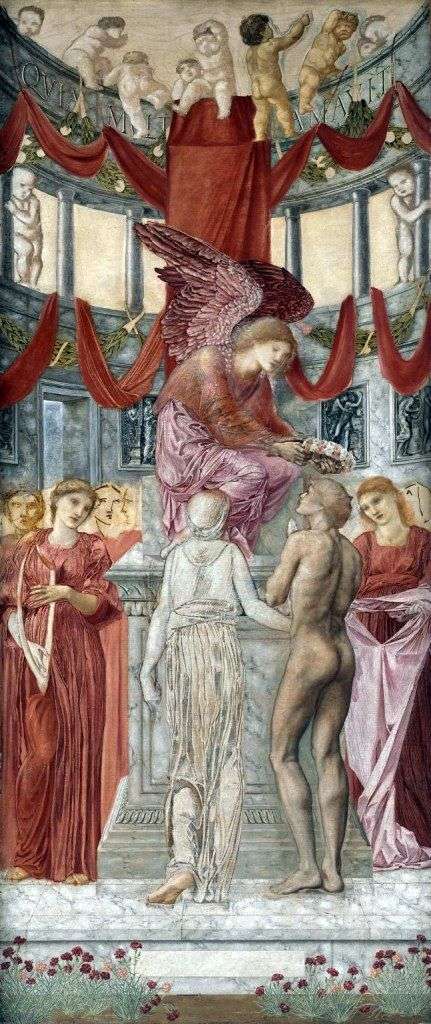
William Morris, who met Berne-Jones while studying at Oxford University, was a prolific author who published stories, political articles, poems. The creation of this unfinished painting of the artist was inspired by Morris’s poem “Love is pretty”, which he started in 1871.
The main part of the poem is played before the newly married play about the king, looking for a beloved. Morris, describing the protagonist, said that this is a king who is not pleased with anything but Love; he left everything to seek Love, and, finding it, realized that Love is enough for him, although he had nothing else. Bern-Jones was to create engravings for the frontispiece of the book, but failed to finish the work on time, and the poem came out without decoration. Anyway, undoubtedly, admired Morris’s allegory, Bern-Jones decided to write a large canvas.
He did not illustrate any particular episode, but instead imagined the scene in the House of Love. The legendary King Farramnd is depicted during the coronation; his beloved Azalais stands beside him. On the bas-reliefs adorning the round walls – the ill-fated lovers already appearing in the paintings and watercolors of Bern Jones – Piram and Tisba, Philida and Demofont, Orpheus and Eurydice.
The artist probably decided that he-has something in common with these tragic characters, because a few years before the creation of the “Temple of Love” he broke up with his mistress – a model of Maria Zambako. In 1869, when rumors of their connection arose, Rossetti told Ford Madox Brown that the affairs of “poor old Ned” are completely bad. Even when Bern-Jones returned to his long-suffering wife, Georgiana, the consequences of marital infidelity for many years made themselves felt.
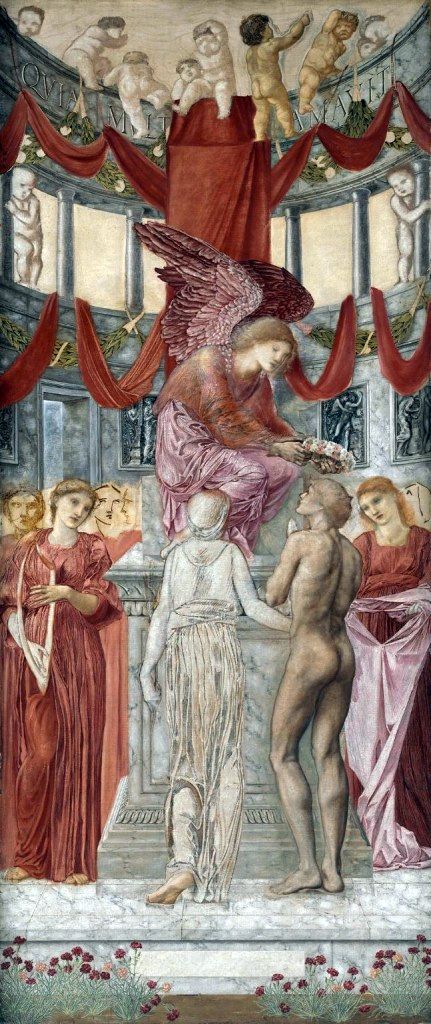 Temple de l’amour – Edward Burne-Jones
Temple de l’amour – Edward Burne-Jones King Kofetua and beggar girl by Edward Burne-Jones
King Kofetua and beggar girl by Edward Burne-Jones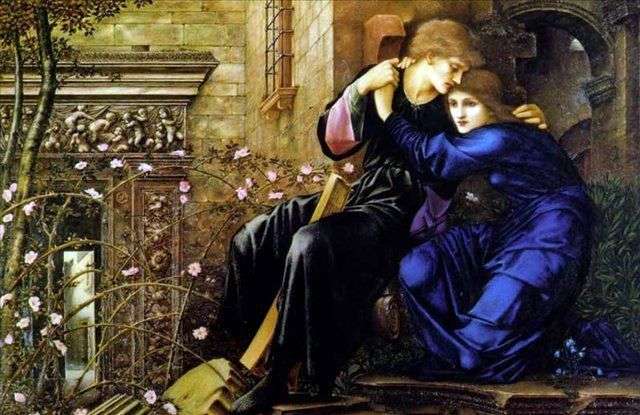 Love among the ruins by Edward Burne-Jones
Love among the ruins by Edward Burne-Jones Sleeping Chaucer by Edward Burne-Jones
Sleeping Chaucer by Edward Burne-Jones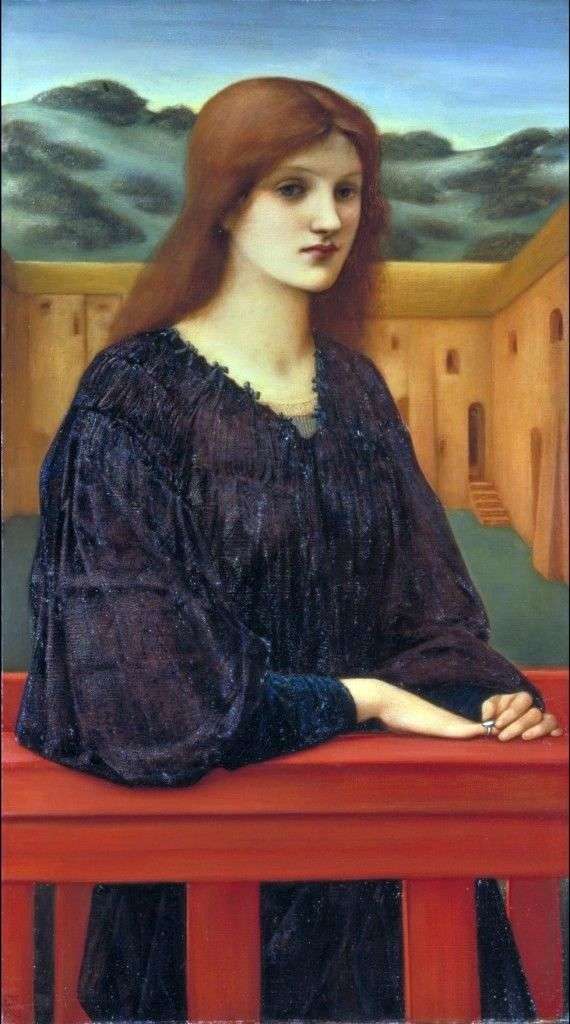 A quiet evening by Edward Burne-Jones
A quiet evening by Edward Burne-Jones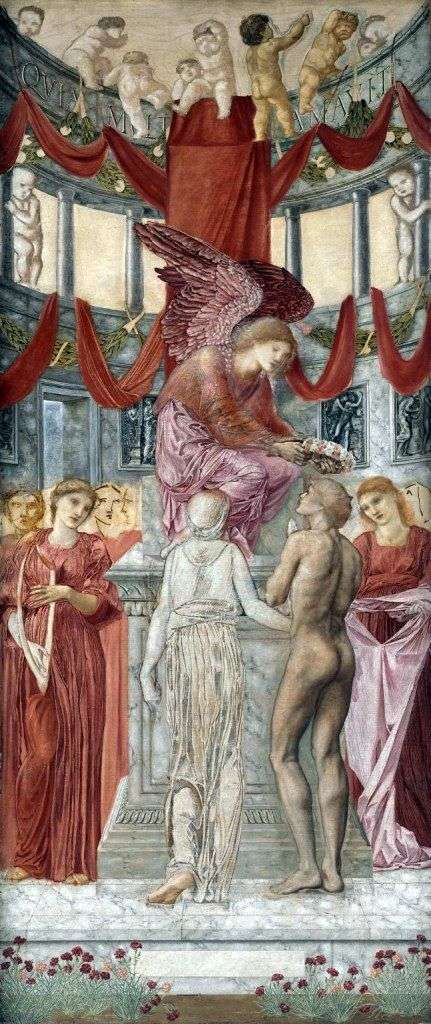 Templo del amor – Edward Burne-Jones
Templo del amor – Edward Burne-Jones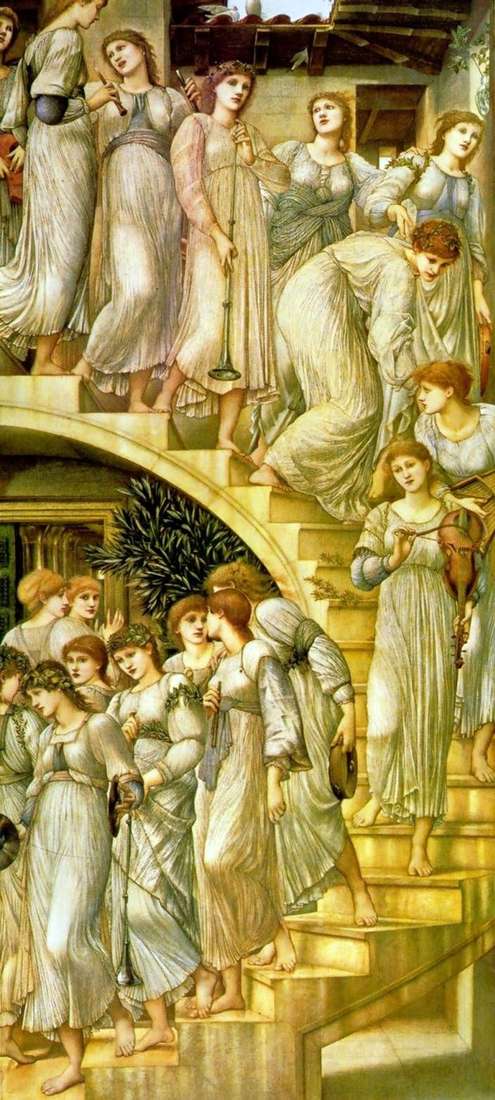 The Golden Staircase by Edward Burne-Jones
The Golden Staircase by Edward Burne-Jones Merlin is in power of spell by Edward Burne-Jones
Merlin is in power of spell by Edward Burne-Jones